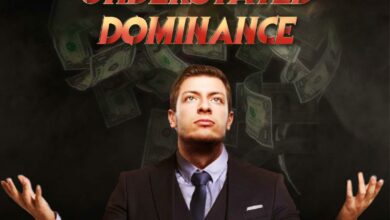Read Super Genius DNA Online Free Novel Review
Have you ever wondered what it would be like to be the first ever Player of Life in human history? If you’re typically drawn to genres like romance novels or werewolf novels, you might find this science fiction tale intriguing as well. Welcome to “Super Genius DNA” by Third Blossom, a captivating novel that merges science fiction with an exploration of human potential and ambition. But, as much as the premise is intriguing, I must confess, I don’t like this novel. The reason is simple: the novel is a prose, and I really don’t like prose.
Novel Synopsis: A Journey into the World of Scientific Miracles and Ethical Quandaries
The story begins with an awe-inspiring premise: the protagonist, equipped with a miraculous cell named Rosaline, embarks on a journey to overcome all diseases. Leukemia, dementia, schizophrenia, lung cancer, pancreatic cancer – nothing stands a chance against his newfound abilities. This unique cell, now a part of his body, makes every research he undertakes an unparalleled success. A confident message [Of course.] resonates throughout the narrative, fueling his determination and setting the stage for a gripping tale of scientific breakthroughs.
However, the novel quickly dives into complex medical and ethical territory. In Chapter 211: Laboratory Seven (9), we meet Yoo Song-Mi and Young-Joon, who discuss a terrifying genetic disorder affecting infants and, occasionally, adults. The detailed description of the disorder, its symptoms, and its fatal consequences are both fascinating and chilling. This sets the tone for a novel that doesn’t shy away from the grim realities of genetic diseases and the moral implications of scientific advancements.
My Review After Reading The Super Genius DNA Novel Online

The characters are well-developed and original, transcending typical tropes. The art is decent, though it sometimes falls short in background details. The story itself is engaging, though it occasionally meanders into lengthy scientific tangents, sidelining the System for several chapters.
Despite this, “Super Genius DNA” stands out for its originality, especially in its use of game-like elements in a modern medical setting. It explores drug-making and the quest to cure diseases, merging reality with fantasy. The medical practices and characters, including patients in clinical trials, are well fleshed out, adding depth to the narrative.
The MC is a strong, charismatic character with well-thought-out strategies and plans. The pacing may feel slow at times due to the slice-of-life elements interwoven with the primary plot. However, this can be a plus for those who appreciate a more nuanced storytelling approach.
Fans of novels, especially Chinese novels, and billionaire novels will find “Super Genius DNA” particularly appealing. It blends the thrill of scientific discovery with the satisfaction of overcoming personal and professional challenges.

Despite the novel’s intriguing premise and its in-depth exploration of scientific and ethical issues, I must reiterate that I don’t like this novel. The prose style, while rich and detailed, doesn’t resonate with me. I prefer narratives with more direct storytelling rather than elaborate prose. However, for those who enjoy prose and are fascinated by the intersection of science, ethics, and technology, “Super Genius DNA” offers a compelling and thought-provoking read.
Download Super Genius DNA Novel Online and Read
For those interested in diving into the fascinating world of “Super Genius DNA,” you can read and download the latest chapters from popular manhwa websites and digital comic platforms. Be sure to check for updates regularly to follow the MC’s journey in real-time. Happy reading!









One Comment